The Type 32 Frigate programme will soon enter concept phase where the role of the vessel and its capabilities will be decided.
The following was in response to a written question submitted in the House of Commons.
Mark Francois, Member of Parliament for Rayleigh and Wickford, asked:
“To ask the Secretary of State for Defence, what estimate he has made of the initial operating capability for the Type 32 Frigate; and how will it differ in capability terms from the Type 31 Frigate.”
Jeremy Quin, Minister of State at the Ministry of Defence, responded:
“The roles and capabilities for the Type 32 Frigate will be decided following the concept phase, which is in its early stages. Therefore, it is too early to compare capabilities with the Type 31 Frigate.”
Despite the above, the Minister spoke previously regarding the role of Type 32 in a previous response, hinting that the Type 32 Frigate will be “a platform for autonomous systems”.
Quin said:
“The programme and procurement strategy for Type 32 will be decided following the concept phase, which has not yet been launched. Further work is required to develop the operational concept however it is envisioned that Type 32 will be a platform for autonomous systems, adding to the Navy’s capabilities for missions such as anti-submarine warfare and mine countermeasures.”
Quin also added that the number of ships in the class will be determined by the requirements placed on Defence by the Government, and the outcome of the development work on the operational concept.
What is the Type 32 Frigate?
According to the recently released ‘Defencer Command Paper’, the Type 32 frigates will be designed to protect territorial waters, to provide persistent presence overseas and to support Littoral Response Groups.
The first mention of a new Type 32 frigate came in the Prime Minister’s 19 November statement. He said: “We are going to develop the next generation of warships, including multi-role research vessels and Type 32 frigates.”
The Defence Command Paper, titled ‘Defence in a Competitive Age’, describes the planned programme:
“Type 32 frigates, designed to protect territorial waters, provide persistent presence overseas and support our Littoral Response Groups.”
The Type 32 was not mentioned in the Government’s 2017 shipbuilding strategy, which overhauled the way the MoD procures warships for the Royal Navy. Nor was it mentioned in the review of the strategy published in November 2019. Early speculation suggests they could be ‘batch II’ Type 31s, but not necessarily based on the Type 31 design, which explains why Rosyth will be building them following on from the Type 31s being built at the yard.
In November 2020, the Ministry of Defence stated that the concept phase for the vessel had not yet been launched but added that the ship is currently envisioned as a “platform for autonomous systems”, used in roles such as anti-submarine warfare and mine countermeasures.
Where will they be built?
The Defence Secretary had earlier appeared to confirm that Rosyth will be building more vessels that previously planned, with the Type 32 Frigate going into built at the yard after the Type 31 Frigate build finishes.
Ben Wallace, the Defence Secretary, recently stated that Rosyth would be building Tytpe 32 Frigates in addition to Type 31 Frigates.
“We are committed to building the Type 26 in the United Kingdom; it is under construction on the Clyde. In Rosyth, work is ongoing to build the facility needed to build the Type 31s and the subsequent Type 32s. He also knows that I recently recategorised the future Fleet Solid Support ship as a warship. I intend to make sure that, if not entirely, there is a considerable degree of UK build in that process, subject to tender. I have to be cautious about the contract, because the competition is to begin soon—very soon.”



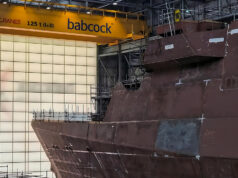
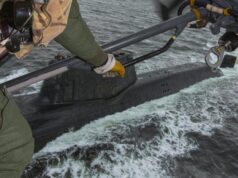
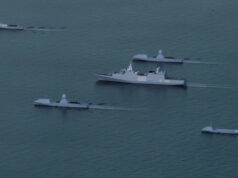
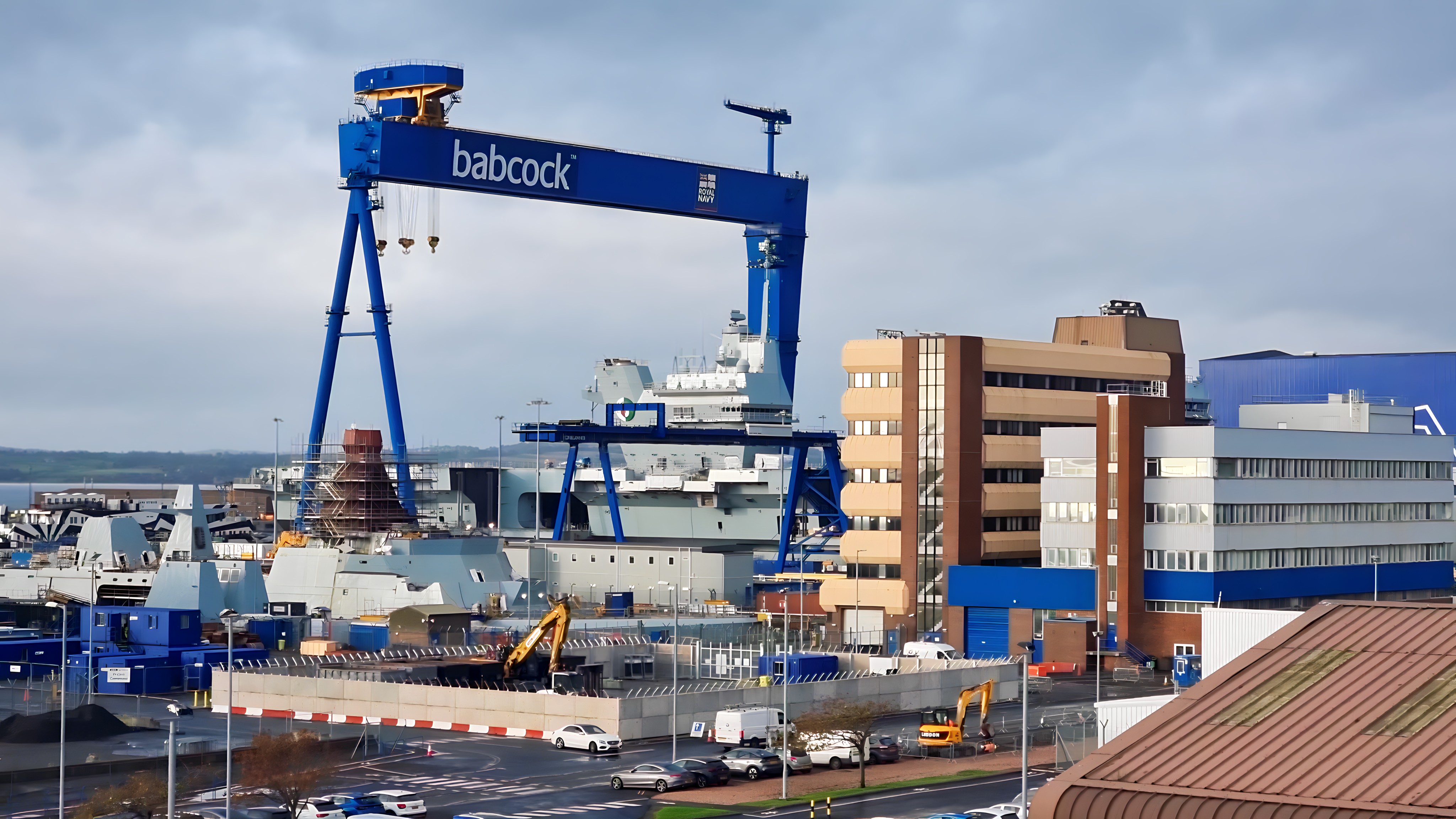
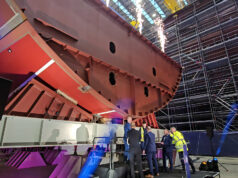
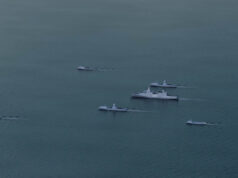
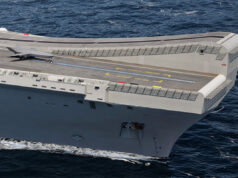
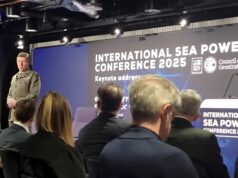
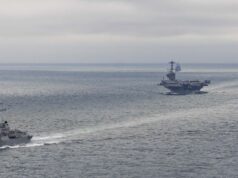
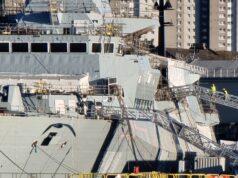

ACME Frigate … beep beep…
ACME subject matter knowledge…beep beep….
Agree with you Airborne.
I’m incredibly sceptical about these ships. For a start even if they are procured their practical benefit on RN number will be no existent. Since the government have not decided to procure a dedicated MCM vessel replacement, it is unfortunately likely that these vessels will spend much of their time acting as mother ships to the new drone vessels. However, my greatest fear is they will never be built. As much as I hate to make things political the reality is defence procurement is a political issue, and the conservatives do like to make themselves out as the supporters of the armed forces but they have undoubtedly cut the miltary in the present for the promise of these future ships. However, its fairly cheap in the first few years of ship procurement as some flashy cgi and a bit of R&D isn’t going to cost a lot, but by the time the big money needs to be spent on actually procurement it is likely another political party will be in power. In short in my cynical mind the current government is setting up any further one to make the hard decisions to cut these ships. Saving them the humiliation.
The problem is the alternative political parties, of which a lot of their members heads are up in the clouds.
I would suggest Meirion X that its not the clouds their heads are up but a somewhat lower darker place
I don’t disagree. However, personally I feel that this is the wrong approach. I’d have thought an additional 3 type 31s and 6-8 Venari 85 type ships.
I think you are spot on with the Venari type ships.
I suspect the Government have been told we need mother ships for future drones as yet to be specified. Indeed during the lifetime of the Type 32 the drones will undoubtably evolve. Therefore the main objective of the type 32 will be to launch, store, retrieve various drones of all shapes and sizes with the contract going to the company that can supply the greatest flexibility and potential for adaptability.
This is where he MOD need to put down their user requirements on a sheet of A4 and pay industry to come up with some innovative designs in consultation with he drone industry such as it is.
As for scepticism, yeah, a lot of us are after years of ‘little hiccups’ in Defence spending. Latterly governments have had a habit of paying for so much up front that its not financially worth changing things although there are problems with this too. Basically, I think we need better politicians but that’s a whole different debate.
What we need is to disconnect politics from defense. Give more autonomy to the armed forces around how they spend their money, very much like the bank of England was given. There would still be flashy things to announce for the politicians, just maybe not only when they need to win some votes or distract from other things. It will never happen, as defense to policticans is all about announcing job creation and not a lot to do with actual war fighting.
I don’t think the politicians came up with Warrior or Ajax. Politicians fix the budget the services decide how to spend it.
You may have a point. It’s hard to know how much impact the defense sec actually has. I suspect the gov is behind the current push in navy announcements /focus, so that their global Britain message can be made, resulting in cuts to the other services. I suspect these short term glamour announcements don’t help with long term gearing Strategies across the armed forces. I highy doubt the army choose to dump the warrior, they were probably told that money was going elsewhere.
Each service receives the same share of the defence budget and has done for decades. The cost of the Nuclear deterrent comes from the whole MoD budget the remainder is split equally. Trust me if that ever changed the other services would make there feelings known !
Non of that is true.
None of that is true ? So please tell me how you think the respective service budgets are decided without all out war between the services ? Arm wrestling ? Tiddly winks ? Perhaps the one who tells the best Yo Mama joke ?
While the comment from Tim was a bit blunt, he’s right. Traditionally the cost of the nuclear deterrent came directly from the treasury and was managed by Defence. Although, that point is somewhat academic.
However the three services are most certainly not split equally. Each procurement project is funded on its own merits and, in theory, the money is given by need rather than ‘split equally’. That leads to headlines like we’ve had recently where the Navy is getting quite an obvious splurge at the cost of the Army. Then you have plenty of procurement programmes which are neither one service nor another such as F-35 or Link-16.
Why is the British Army’s equipment procurement so shambolic? (ukdefencejournal.org.uk)
I haven’t managed to find a breakdown by service but I did find this which shows project-by-project, indicating that it’s not about ‘fairness’ but about ‘need’. 20200227_CH_UK_Defence_in_Numbers_2019.pdf (publishing.service.gov.uk)
Anyway, I think we can safely say that the Navy operates more expensive equipment with more people than the RAF does so they clearly aren’t funded the same. Unless RAF Officers’ expense accounts are factored in.
The Treasury has not paid for the nuclear deterrent for very many years, probably 2 decades ago.
You are right that the services do not each get a one third share of the pot for equipment procurement. In fact each service does not get a penny for procurement – CGS, Commander Field Army or the boss at Army HQ, Andover do not get a dollop of cash to procure new kit. Neither do their equivalents in the RN/RM and RAF.
DE&S will be a Top Level budget holder for procurement of new capital equipment and consumables. Funds are subvented internally to domains within DE&S (not individual services) based on need of agreed programmes.
ergo the Army is not buying Ajax, the Navy is not buying Astute and the RAF is not buying Poseidon MPA. DE&S Programme offices are buying that kit for those Services to operate. The relevant DE&S Programme office will hand over that kit to the operating service when it passes all Factory Acceptance Tests.
Hi Graham, thanks for that. I don’t believe that DE&S is quite as independent of the FLCs as you suggest – all equipment programmes have the Sponsor and Designated User from the FLC, and there’s an individual relationship between the FLC and DE&S. Para 3 p21 of “How Defence Works” outlines it. But yes, the commands don’t (usually) procure major equipment themselves. How Defence Works (September 2020) (publishing.service.gov.uk). Spending overall is worked out based on each service’s needs, through the Business Cases that are part of the MSP process and subject to constant review.
On Trident and the Treasury, you are right. My mistake.
By the way, is this the same Graham Moore as on Quora?
I would be more than happy for Warrior to get its WCSP and this should have been embodied years ago – and to be a worthy supporting vehicle to CR3. All spending on Ajax has been a total waste of money.
££££££££££ will decide it all
Totally agree
Hope they keep as much as possible of hull, engines internal arrangements from Type 31. The more they fiddle around with the design the more time and money it’ll cost getting them into service.
Baykar defence (Turkish producer of their UAVs) have released a tweet which visualises what they think the Turkish platform for autonomous systems may look like:
https://twitter.com/Baykar_Savunma/status/1417378870064525330?s=20
I think there was a UK through deck design kicked around quite a few years back.
“Through deck cruisers” was the name of the Invincible class at the time of Harold Wilson Labour government if the word Carriers had been spoken about then the idea of building 1 would have gone straight in the bin . The MOD got round this by telling the politicians that The Invicible class Carriers were infact Through deck cruisers naughty but worked , the only problem with the design was a stupid fwd center line scissor lift
Fairly sure the T32 will effectively be T31 batch 2. Hopefully up gunned with more developed autonomous systems.
This article sums up why everything takes so long. The type 32 was first announced months ago. With the right people in the room all the big decisions around concept, capability, numbers and budget could be decided in a working week. The vaccine task force has shown big decisions don’t need months and years of faffing about. This should be the quick and easy stage!
Hi Andrew,
Yup, I couldn’t agree more. However, I would point out that the yards will be busy with the T26 and T31 until at least the end of the decade and that gives the navy a problem.
If they want them to be motherships for autonomous vehicles they will need to make a pretty good guessimate of where the technology is going as it is changing pretty quickly at the moment. The RN is contributing to these changes itself because even though it is tending to focus on off-the-shelf systems their very interest will encourage competition within the industry.
So there is a real risk that the RN could get things very wrong. MoD requirements guidance is that you should actually spend more time sorting out the requirements and understanding the trajectory of relevant technologies and not rush into detailed design. This is because it costs far more to make changes the deeper into the programme you get. That doesn’t mean sitting around playing fantasy capability for 20 years… See army armoured vehicle programme for example!
As such I am pretty relaxed about the lack of details at this stage. The concept phase is only just getting underway and it is not as if the RN doesn’t have other major projects to keep moving forward or a huge pool of experienced people with nothing to do. The RN is very busy and it has probably one of the most improved procurement programmmes around at the moment, all be it far from perfect.
These ships will not be in service until the early 2030’s, so today’s needs will probably not be so relevant. This makes getting the concept phase sufficiently right to allow the ships to be built, commissioned and put to effective use for 10 years at least without needing a major redesign, all the more important and quite a challenge. Working out what the world will look like in the 2040’s isn’t easy.
I will start to get more concerned if the concept phase is not complete in 2 years time and the assessment / selction phase started on time and also taking no more than 2 years. First steel cut will need to be cut in 2029 (ish) if the T31’s stay on schedule and the drum beat is to be maintained. That will leave 4 years for detailed design (although detailed design can overlap first steel being cut to some extent). So 4 years for concept and assessment phases is definately the maximum.
Get it right up front and the rest has a far better chance of going smoothly.
Cheers CR
Looking like it was pretty short-sighted to close the Portsmouth BAE shipyard if we are now running out of space to build ships! How are we ever going to be able to build ships for export if we don’t even have the room to build our own…
It looks like for keeping the United Kingdom together with the Scottish calling for a 2nd indie referendum Portsmouth BEA systems place in the dockyard has become the Sacrificial lamb and Rosyth has gained with both building and more jobs .Ship building in Britain has now become political.
Pompie hasn’t built a FF sized ship for the RN since the late 1960s. OK 3 corvettes for Oman have been built but that project was hardly a great advertisement for BAe Portsmouth capabilities.
They build Blocks and that’s the limit.
Given the average escort is in service for 30 years and at best the RN is going to have 25 escorts we definitely don’t need another build yard. Without exports, which aren’t a certainty we don’t have work for the 2 yards we have without putting some support ship work though them. Timing is tight at the moment but addicting capacity know would just create problems in the future.
2 yards? BAe Govan, BAe Scotsoun, Babcock Rosyth, Camel Laird Birkenhead, H&W Belfast, H&W Appeldore… that’s more than 2 if my maths is correct?
“However, I would point out that the yards will be busy with the T26 and T31 until at least the end of the decade and that gives the navy a problem.”
Well build more shipyards then, it’s not rocket surgery.
“If they want them to be motherships for autonomous vehicles they will need to make a pretty good guessimate of where the technology is going as it is changing pretty quickly at the moment.”
Build modular vessels then with a plug-and-play architecture. Voilà – future-proof vessels. No guesstimating required.
“The RN is very busy and it has probably one of the most improved procurement programmmes around at the moment, all be it far from perfect.”
Far from perfect. Brilliant. I love someone with a sense of humour.
“First steel cut will need to be cut in 2029 (ish)”
These are vessels that are meant to detect and take out mines, among other jobs. Why would they be made out of steel? They should be made out of other materials like glass-reinforced plastic that are far less likely to trigger a mine.
Whilst I understand and appreciate the concept, the government behaviour around the covid vaccine probably isn’t the best example to use.
I don’t know if you have experienced this or not, but in my line of work I frequently attend meetings, and it’s a general rule of thumb that the more people involved the longer things take, especially when people who aren’t directly involved want to put their oar in and doubly so when at least 80% of the people on the meetings are just playing politics and genuinely don’t give two hoots about the subject they are arguing about. Scaling this up to government level I can imagine what a nightmare it u trying to get anything done.
Whilst people argue saying our civil service is efficient, I still believe it is bloated and inefficient. Likewise, our top ranks of command on the army is generally made up of the 80% politics type, who are simply eying up the next promotion/ juicy pension.
Like so many businesses, if you got the right people in positions of power (re the armed forces) and managed to keep them there for a decent time,whilst seriously minimising political involvement, I think you would see vast improvements.
Its gonna be a RN version of a Littoral Combat Ship (hopefully without the problems). Modular, plenty of space for minehunting equipment, sort of replacements for the Hunt-class, and Sandown-Class. Possibly more heavily armed, and with an up to date sensor/weapons fit, as it won’t start construction until about late 2020’s/early 2030’s, – so a decade’s worth of technological advances would be integrated. This is pure speculation, but seems to confine to earlier annoucments of it being modular, and a platform for unmanned craft.
What MWC are they? The autonomous MCM systems are replacing the current MCMVs. Mother ships could be anything from a T32 to a STUFT,commercial or RFA asset.
I can’t believe they are continuing to build the LCS. A perfect example of Congress gone wild. I read where they have even started “retiring” some of the early ones. LMAO
I think they are retiring the first two Freedom and first two Independence class ships, but later ships did have improvements over these early ones (for example later Independence class ships have bridge wings). But yes, absolutely crazy like a lot of US military procurement. Look at the Zumwalts! Imagine what they could do with that budget and some half-decent planning…
Most nations are retiring their dedicated MCMV fleets and replacing them with unmanned systems deployed by Motherships
No… it’s 5 ships + undisclosed number of Unmanned Mine-hunting boats.
5 Ships each with 3 UVs would easily equate to the current MCMV squadrons.
Are those harpoons I can see on the main image? In other news seems the media have jumped on the fact only ONE Type 45 is operational. Interesting as the guy at the bottom seems to think we should have a ‘bigger navy’. Something you don;t hear alot nowadays… https://www.standard.co.uk/news/uk/royal-navy-tobias-ellwood-russia-andrew-matthews-nato-b946797.html
Image is the Stellar systems Spartan Frigate that they proposed for the Type31e Frigate competition some years back that was won by Babcock with the Arrowhead 140 design.
The Times also reported it.
It was a mistake to cut T45 numbers from 8 to 6. To enable increased AAW capability quickly we should fit the first 2 T26 with a better radar and put some Asters or Standard missiles in the Mk41s.
Agreed.
If that was done RN would have more problematic ships , assuming T26 will not have issues. I think the mistake is to not have AAW in Type 26.
and we’d be crying that we don’t have enough ASW ships.
A +7000t size ship can not have emphasis in ASW and still have Aster 30 and a good AAW radar?
Italians can do it with FREMM, Usn with the derived one and Canada and Australia with Type 26.
Type 26 is double of a Type 23.
Can they? FREMM has specific ASW and GP variants, and though it carries Aster, 16 missiles doesn’t make a particularly good AAW compliment. Especially when you remember that unlike the City Class, FREMM doesn’t carry CAMM.
And… honestly I’m not sure that holding up Hunter and CSC as a successful conversion of the Type 26 design to AAW is the best idea.
Could have had 32, but the objective here is to air denial of vectors. And it has a radar that can detect and track ballistic missiles.
Type 26(UK) cannot threat a vector due to lack of range, vector will be almost always outside range lobbing missiles.
Beside only 6 ( mean 4 operational in theory) ships with air area denial capability is too small qty.
I think a Canadian or Australian Type 26 eventual failure would be regardless of the ship itself. It is a big ship. probably have been called a cruiser if we were in 1970’s
I am not even going to Russian, Indian and Chinese destroyers.
Could have is a weak argument. It has 16. It’s not a suitable AAW escort contrary to what you said.
And if we had less than 8 ASW escorts then we’d have too small a quantity of ASW ships.
Another bold claim that’s impossible to prove one way or the other. Fact is the RAN and RCN are doing exactly what you suggest the RN should do and are having a lot of difficulty making it work.
What a ship would have been called in the 1970s is irrelevant. Destroyers originally displaced 200t, which is exactly as irrelevant to modern naming conventions as class/weight correlations from half a century ago.
It has space and margin for it. And if you hit the vector there will be less missiles needed.
RAN and RCN have difficulties because they do not have a permanent naval industry. If they had they would have designed their own and not went for T26, so things are much more difficult, you have to find people all over the world because the local know how for this type of project is scarce.
Well allegedly that was true of the Type 26, and yet look how that’s going when they tried to convert it into a multi-role vessel. As I said, “could have” is a weak argument. It doesn’t, and basing “it could” off of open source is… well the less said about that the better.
(Btw a reminder it’s 16 Asters to defend the ship itself, it has no CAMM, so you fire those in an Area Air Defence scenario you leave the ship with no SAM to protect itself, so if you want to use FREMM you either need a whole lot of Asters (like Type 45) or a whole lot of Asters AND CAMM (like Type 45 will be soon).
And no, they’re having difficulties because the Type 26 isn’t designed to be an AAW ship, and they’re trying to fit a square peg into a round hole. That’s why the RN didn’t do it, and instead has dedicated AAW and dedicated ASW ships (not to mention they need to be in different places at the same time).
Making Type 26’s into AAW ships simply would mean fewer ASW ships available, and people are already upset that 8 isn’t enough.
Sounds like a Jack of all trades, Master of none
Or a Jack of no trades. It is a bit worrying that they seem to be saying ‘we don’t know what we want yet’ – a caseof making because it seemed like a good idea at the time politically rather than due to operational need.
That is why i call it ACME frigate. It is merely a placeholder.
Hi AlexS,
I think it is a little more than that, but only a ‘little’.
The fact that it has been annouced and that so many questions are being asked means that the navy will be under pressure to come up with answers. In effect the starting pistol has been fired and the navy will be thinking about it and I am sure there will be a small team being put together, even if they only get together on their tea breaks to start with 🙂
Given that the T31 programme is scheduled to deliver the last ship in 2030, first steel for the T32 will need to be cut in 2029 if the yard is to be kept properly employed and the drum beat maintained. So I think that annoucing the T32 now is a good thing. Same goes for the T83.
I am also pleased with the level of interest being shown, even if some of it is barely cognisant of the Royal Navy or defence in general!
Cheers CR
I actually think it is a good idea to wait where drones go until committing to a specific project.
Well given that the Navy doesn’t know how much money they’ll have to spend on them, it’s kind of hard to know what they’ll be able to ask for…
True, but it is useful to ask for what you need – a blanket we’re going to build some ships but we don’t really know what’. If listed as a T32 then a natural assumption would be that the price category would be in the same area as the Type 31 and that it would probably have a similar function. I appreciate that isn’t always the case!
Okay but then, if you assume a 250mil hard price cap and zero GFE then it won’t be a Type 31.
At present the RN doesn’t know what it will need more in 10years (and what it can afford then) an MCMV mothership? A Constabulary Frigate? Something else?
Any announcement now would come with some very heavy asterisks*, so I kind of approve of the Navy getting ahead of the inevitable “flip flop frigate” story if they changed their mind and refuse to get pidgeonholed.
*subject to change
If the RN doesn’t know what it thinks it needs in 10 years then it is in trouble. Granted, the government may cancel things or change them, but it takes a lot of time between the proposal and first launch. Type 31 was the result of a 2010 Review; the name of the type was mooted in 2015, design selected in 2019, now due to enter service in 2027! If we take the 2015 date (it’s as good as any) as the real sort-of-confirmed start, then from naming to planned entry in service is 12 years – so you have to plan more than 10 years ahead.
Type 31 is a pretty good example though:
Originally it was going to be a C2 ship, then maybe a black swan distributed system, then a Type 26 with less equipment, then it’s own class of light frigates, and each time the Navy said they’d changed their minds there was much wailing and gnashing of teeth. And *THAT* was for a 1-for-1 Type 23 replacement.
As it stands the Navy got told they can have a new thing but no idea how much will be budgeted for it, or exactly what roles will need filling more urgently, so let them point out that they will be looking at different options and haven’t made their mind up, instead of expecting them go into a silo that will be a public relations nightmare (I can already see the “broken Frigate” promise if they need 5 MCMV motherships) when they do order what they actually need.
I tend to agree with that – but it’s still the case that the RN/Government would be expected to ‘know’ what they want to justify expenditure, even if it does keep changing!
I think where I’m coming from is more: They don’t know what the expenditure is, and it’s harder to change if you’ve announced it than just change internally if that makes sense?
Makes sense. So you do a Type 45. Know what you want, build something or plan for something that doesn’t quite make it, allow for upgrades. But you have to have an initial plan to allow for what you eventually what.
Easier with a Type 45/Type 26 though because it’s a replacement. The RN knew it needed a new Air Warfare destroyer to replace the older ones, and knew what systems they’d have to fit on it.
Same with the Type 26; they knew it had to replace the 8 ASW Type 23s.
Same with the Type 31.
For the first time, in a long time, the RN has really been given a blank slate: You get 5 ships that are not a direct replacement for anything in service right now. That is a very different situation to any other surface escort.
So what needs a numbers uplift?
All of the above (with the exception of the last one I guess) are things the RN would definitely want. The questions are a) where is the pinch point that will need filling most, and b) what can actually be procured when the budget for Type 32 is announced?
And what will the Type 83 be? Will that be a 1 for 1 Type 45 replacement? Or will it be a large cruiser that will augment Type 45/Type 46? And how would that affect a Type 32 program?
Agreed,but I’m thinking why call it a 3x if it doesn’t have a family relationship to the 31? The 83 is a curveball; not related to the 45. The fact is, we don’t know but the navy should have an idea… my own guess would be that the Type 83 will be an enlarged Type 45 (or similar) with an enhanced drone launching capacity – both for enhanced Air Warfare capabilty (better long range detection from up high) and possibly ship to shore missile capacity as welol as the Air Defence systems. Not all being built in at the start of course…
The Type 32? With the navy’s increased role in far flung regions I would go for something that represents a modern day cruiser – built for long range cruising(increased fuel storage?) – basically your Independent light cruiser able to operate where the Rivers are a bit on the light side.
I think the idea of Type 83 is to follow on from the Type 82s: Big destroyers that will be centrepieces for the CSG escorts. The only real question is if Type 83 will be 1-2 hulls in addition to 4-8 Type 46 hulls, or if it’ll be 4-8 Type 83 hulls.
I can certainly see the Type 32 becoming the OCPV/C3 design from the pre-2015 SDSR plans. Currently the C1/C2/C3 fleet exists de-facto anyway (with C1 being 45/26, C2 being 31, and C3 being B2). Type 32 being an Ocean Capable Patrol Vessel would certainly fit and would allow the B2s to replace the B1’s as they come out of service.
However I think the RN is wise to wait and see where the pinch points are. It’s entirely possible that Type 32 might be better doing something else, C3 remaining with B2, and simply making more OPV’s to replace the B1’s as they come out of service.
Nothing there to disagree with. There is a need for ships to escort the carriers; on that basis, the Type 83 following on from the Type 82 as a concept seems reasonable. However, the ship itself would probably be a lot different from the original Type 82 – things have moved on a bit since then. That’s why I like the idea of a Type 83 being a picket ship providing drone-based cover seems a possible solution. Add that to strong anti aircraft systems plus limited submarine detection kit and I think you would have a good fleet escort capable of independent action. Downside? Unlikely in this form as expensive.
However, if you only use them in the carrier escort role, and the Type 32s as the independent operators, it reduces the average cost of the system as a whole – and the Type 83s could start life in a more limited role but with things added through it’s life.
As for the B1/B2s – frankly, for basic patrol work in the Falklands or Gibralter, or as a means of escorting Russian ships through the North Sea – do we need anything heavier? It would be different if it came to a shooting war, but we aren’t in a shooting war and I think ‘cheap’ options should be available and used when appropriate.
Ah I think you got me wrong with the Rivers. It’s not that I think the B2 are insufficient for their current roles, far from it (I’m usually one of the ones anti-upgunning them here). However by the end of the decade the B1’s will be approaching their 30th Birthdays, and will need to be withdrawn from service due to their age.
One of the options would be to replace the B1’s by withdrawing the B2’s from overseas postings to take over from them, and then replacing the B2’s with a purpose designed Ocean Going Patrol Vessel. If that route is chosen a Type 32 could be a enlarged River class with a hangar and more Frigate like speed and range.
Actually, pretty much stands – if the B1/B2 is sufficient for the purpose, no need to replace with a more expensive one based on ‘your’ Type 32 – as is the potential version you just mentioned! I would replace them with more B2s or currently fictional B3.
Simple fact is, of course, that as far as the ‘smaller’ destroyer/frigate types go, main thing is we just need more, period!
You know what I would like to see? Half a dozen smallish diesel (or similar!) submarines based on the East Coast of the UK – we concentrate on far away places and say the North Sea is covered by ouir allies – but imagine a British sub visibly leaving an East Coast port every couple of weeks to go… Baltic entrance? between UK and Iceland? – then 2 or 3 dayts later the unit it replaces coming into port. A nice LOCAL deterrent that is under British control.
Never going to happen.
Because the River B2’s, while they are excellent can be improved by a purpose build Ocean going ship: Building a new ship with a hangar is a pretty good win, especially if this can double as a mission bay, and since they can make at best 25 knots they can’t cruise with a CSG when it’s in their neighbourhood (something worth bearing in mind when it comes too fwd deployed assets in Singapore), and 5,500nm is great for an OPV, but it’s not in the same territory as the Type 31’s 9,000nm (again might be useful if we are talking about the Pacific).
*edit* Remember that there is already talk of having Inspirations take over from Rivers on fwd deployments, or at the very least Augment them. But as I said, this is just one option the RN might go down, and they might feel they need more depth in the CSG department, or a more punchy MCMV mothership, so who knows.
(And yes, since fwd deployed ships develop really in depth local pictures and familiarity with their AO it’s sometimes worth keeping even an OPV with a CSG, as long as they can keep up).
Not sure there is much point to 6 diesel powered subs tbh. There’s 16 already covering the north sea in the form of the Dutch, Norwegian and German Navies, and then you have every air force that borders on the north sea being a friendly NATO one. Anyway, the argument against a local deterrent is the same one against small corvettes: The RN isn’t interested in “local” unless that local can also deploy across the globe if needed.
Granted helicopter bay always useful. If the mission needs it, then yes it would be the best option – but if not necessary then it comes under cost. Simply a case of assessing the need and cost effectiveness of meeting that need.
The submarine option is a personal view. When it comes to security that close to home I would prefer one of our vessels on site. Apart from anything else, friendly today may not be friendly in future… Plus a UK submarine on station has one possible advantage… the words ‘if’ and ‘possible’. A future UK government could have a sub with a nuclear capability… if the government chooses. The Dutch, Norwegian and German won’t. For the UK, it would be a potential credible bluff…
Welp, and you’re planning your procurement policy off the dissolution of NATO. So… no.
And you don’t need an SSK if you want a Nuclear Torpedo (why TF would you want one anyway), an SSN does that just fine. Of course if you really needed to drop nukes into the North Sea the German Airforce can do that already, so that would be a rather expensive duplication.
Edit: Although I feel the need to reiterate that you’ve just said that an enhanced range patrol ship, similar to what you’ve suggested in previous comments would be too much money, but want to have the ability fire nuclear torpedoes in the North Sea, an area that is probably the most secured stretch of sea for the west anywhere in the world.
2nd Edit; In fact I feel like we’ve gone so far off into fantasy land here that I’m stepping out of this conversation.
No, I’m looking at a policy that, when needed, is independent of NATO – in theory at least! German airforce has provision to carry US nukes. The word is deterrent!
Whelp?
Oh, and items like this don’t really cause me to have confidence in our allies where our security is concerned…
https://www.popularmechanics.com/military/navy-ships/a14480191/germanys-entire-submarine-fleet-is-out-of-commission/
Well I have said this in the comments before but my prediction for type 32 is a jazzed up version (technical term) of the Black Swan concept from 2012ish. I am curious to see what happens but only time will tell.
I’m not sure its that radical, the black swan concept was to replace a frigate with around four times the number of small low value combatants. Black swan was about using the concept of unmanned platforms to keep these cheap low survivability platforms away from harm and if they did get knocked out you still had 3 left. It was functionally a strategy of attrition.
I am not suggesting the total implementation of the concept. The concept documents spoke of slowly implementing the idea by starting as a Mine/hydrographic vessel focused on unmanned systems before progressing to the point you describe. The current descriptions of type 32 sound an awful lot like the early stages of the concept. I believe it is an indication of the type of vessel it will be. Basically a cheap base vessel optimised for unmanned systems not a high end type 26 style vessel that I am sure many people hope for. The reason I say ‘jazzed up’ in my initial comment is that the base vessel proposed in the concept documents is probably an unacceptable risk. But I am imagining a vessel with better survivability and basic equipment and weapons fit. Maybe something along the lines of a Venari 85 but with CAMM and a medium gun at the front. But this is just my thoughts.
Yep. Looking that way.
A bit off topic, but has there been any news on the new survey vessels.
Where in many cases it is to early to say what the T32 would look like there is a possibility to give options. Yes we would like them to be mother ships for unmanned submersibles, vessels and aircraft. Yes we also need them to be able to act as fighting frigates. Is there any designs out there that we could base these two main requirements on, again yes. We could base the T32 on the Absalon class which is related to the T31 or we could use the Damen Crossover concept. The Crossover concept could in turn be used for the T32 or the LSS roles as the design can be altered to fulfil both requirements. So there is design concepts out there, so why reinvent the wheel, it should make the overall development cost more effective.
Hi Ron,
I do not think they are going to reinvent the wheel, but they do need to understand the roles the ship will undertake and more importantly what the threat is likely to be in the 10 to 20 year timeframe. Fortunately threat assessment is an on-going process so working out what the RN will be expected to do, where and for how long all need to be scoped. These issues cut across the political arena, so there is one potential area of confusion and muddle!
Once this is all sorted you develop outline concept requirements and then start talking to the builders and designers and that is when the platform development and options start to emerge. The RN / MoD do not design ships, its not their job, so the concept phase in MoD parlence is not about coming up with solution concepts or designs. It is about likely threats and concepts of operation and capabilities.
For example, the selected system should be able to apply mission kill effects against such and such surface threat whilest the mothership remains well beyond threat detection system and surface based effectors. (The word effector would cover hard and soft kill systems in this example and there would be a similar requirements for deal with air launched threats.)
So the MoD’s concept phase will not actually ‘design’ the ship, although CGI’s illustrating the possible solutions will be produced simply because it is expected.
Cheers CR
Hi CH, in many ways I agree. There is one issue that I have a problem with, the design of ships. I have at home about 300 ship plans that were designed in concept by the Admiralty. These designs included weapons, speed tonnage etc, they were then given to builders for the final design concepts. Then based on design cost etc to fullfil the Admiraly concept contracts were issued. What seems to be missing in the today is the Admiralty design concept design. I’m not sure but I think it came under the third Sea Lord as Director of Naval Construction which was desoloved in 1966. Possibly we need to bring this department back under Admiralty control.
“….. designed to protect territorial waters…..” With this in mind I would expect them to be a development of T31 with a much better ASW fit.
OT, but CAS comments of great interest.
https://uk.yahoo.com/news/raf-could-revive-cold-war-121729538.html
How they plan to service this dispersal with so little assets will be interesting.
There is an interesting article over on the UK Land Power site – The Light Armour/Heavy Armour Cycle. You can draw a lot of parallels from this and apply it across all our branches of the Armed Forces – in short, it’s cheaper to be properly equipped from the start. Perhaps all those 2*/3*/4* and treasury bods should have a read!!!!
Absolutely!
Yes, we used to do lots of dispersed training, but the big difference between then and now is the number or lack of personnel we now have. In the 80’s before the cuts the RAF numbered over 95,000, now its hovering around 40,000. The manpower allocated to Squadrons has been reduced by at least a half or they have been combined into a super Squadron. Where they are farmed out as needed, 33 Eng for example.
The complexity of running a detachment of aircraft from an austere site cannot be underestimated. The majority of personnel (aircrew not included) will be double shifting, i.e. doing their normal job for 8 hours then pulling guard duty. There isn’t enough RAF Regiment to do close force protection as well as surrounding area protection. The plank squadron personnel only do rudimentary defence training compared to the helicopter squadron personnel.
The Helicopter Force are in a much better position, as both Iraq, Afghan and Mali were run as austere operating bases, even though over time they got more regimented. Therefore, everything that was needed to operate and service the aircraft was detached with them. But also welfare, sleeping, washing and eating was planned for then set up. The only thing lacking has been UK based “austere” deployments that incorporates the aircraft plus the defensive requirements, when a “red” force would attack the site. Typhoon and now F35 will have to learn the trade from scratch. There’s very few personnel left who had Harrier let alone Jaguar experience. Admittedly the Typhoons have been conducting detachments to “austere” airfield sites. These have only been for a day or two and use recently closed down airfields such as Cottesmore and Leeming. At some stage they will have to extend the number of days they operate as well as the number of personnel involved, including the necessary ground based training, if they are going to redo dispersed operations that are realistic.
I am pleased that the Top Brass are actually admitting that the bases are easy targets and that too many eggs are in one basket. It will be genuinely interesting to see how this plays out?
Agreed, good they’re talking about it.
Home based SAM systems maybe? Or additional Land Sceptre? The army’s 16RA is limited and primarily for field ops supporting 3 Div not home based air defence.
Fuel issue is fine as GPSS covers most locations ( even if like everything else it’s been sold off! )
RAF reg too small, even with RAux AF sqns which augment the FP Wings.
For UK based in wartime could they use an Infantry battalion? Or a reserve unit for local area patrolling? Or maybe elements of the MDP?
TSW more SHF and field focused and needed elsewhere.
Expeditionary Logistics Wing has all the pieces, but only in supporting the EAWs not a wide dispersal like this.
Could they use RAF or MoD Stations where that infrastructure and security is still in place as opposed to civilian airfields? I can think of several, some with HAS.
I had this conversation here a few months ago with Dern and he pointed out to me a while range of issues.
A number of the “unused” airfields that are now barracks, have their runways and taxiways maintained, as they are earmarked as emergency runways. So there is definitely scope to use these, I can think of at least 8 that could be used immediately. The question with some of the older unused airfields is the runway length, some will be too short.
For aircraft like the F35B it won’t be such a problem, if they used the shorter runways. Typhoon has pretty good STOL, though they do need quite a lot of runway when landing when near MTOW. The Hercules can land pretty much anyway that is flat and the A400M will also be able to use rough strips. It’s the heavies such as the E3D (E7), P8 and Voyager that will be the problem. There are only a few non-commercial runways that can be used by these aircraft. Then there is the support equipment that these aircraft need. When flying from a main operating base, the support equipment has been bought to service X number of aircraft in one location. When these aircraft are dispersed, will there be enough spare sets?
If we now look to the future where we include “loyal wingman” aircraft. These will also need to be considered, can they be used and supported from austere sights?
Force protection will be a major problem, downsizing the Army’s manpower does not help in this regard. The RAF will and must fend for itself. It cannot rely on the Army, as they are likely going to be too preoccupied elsewhere. The plank trash will have to at least match the abilities of the SHF. However, even they are still a long way behind the infantry capabilities of a logistics regiment (did I say that?). The RAF regiment was formed due to the failings of the Army in WW2 to protect airfields. As the Army staff at the time believed they were a low priority. There role in defending airfields is conducted in surrounding areas, as the airfield is supposed to be defended by other Station personnel.
The RAF Regiment handed over the reigns of GBAD to the RA. There will not be enough Sky Sabre systems available to provide airfield defence as well as high value targets or deployed brigades. Giving the Reg’ a Stormer with a Starstreak HVM will not be good enough. As HVM cannot engage multiple targets at once. Therefore, either more Sky Sabres will be required or a fire and forget version of HVM.
I applaud the ACM for stating that we need to disperse our assets in a conflict. However, at present we do not have the means to support or protect the aircraft if they do.
8? I’ll have a go. Loads of possibilities though smaller ones runway and infra surely an issue.
Boscombe. Woodbridge. St Mawgan. Leuchars. Cottesemore. Wittering. Leeming. Chivenor. Yeovilton. Culdrose.
4 or 5 of those ( unsure Woodbridge since USVF left if they’re useable ) have HAS.
Leeming and Leuchars obviously useful as we’re front line fighter stations. Cottesemore Withering don’t but had Harrier.
Boscombe, Culdrose, Yeovilton all mentioned as dispersal for QRA in hijack situations were a definite threat from the west has been IDd.
Seen transports using Woodbridge ( Rock barracks ) and Chivenor.
Unsure of availability of Honington’s runway, has all the HAS though and the SSA for Trident.
Mona, Woodvale. Runway probably too short there. Aberporth and the old DRA Llanbedr too.
Heavies. I’d guess confined to regional international airports with good length runways? In wartime why not use commercial locations? Kinloss still available.
Lots of options! Like you will be keen to see where the CAS gets the organisation to enable it.
Albermarle’s runways are still maintained
Ouston? Really. One has the SSA for Trident sat on it.
The runways are still maintained, they might store stuff on them but they are there and maintained
Further options are Colerne, Brawdy and Upper Heyford. These three have pretty long runways and are still maintained.
Stayed in a few of the HAS at Leeming. They were like sleeping in a freezer. The building’s heater couldn’t be operated as it hadn’t been turned on in years for fear of gassing everyone. 2nd time we used them, I took an artic sleeping bag, lesson learnt.
UH? That’s interesting I thought it had become an industrial estate. Yes, Colerne, hangers there look ancient!
You could add Shawbury and St Athan, although St Athan is now civilian bar the western part.
Oh, and Cosford! There are probably others we’ve not thought of yet.
Is there such a thing as a RN Regiment to protect naval bases? They need aircover as much as airbases and army barracks.
No.
The MoD Police and MPGS ( Military Provost Guard Service ) guard naval establishments.
Off topic but I find it hilarious that Cottesmore counts as “austere”.
By the time this type gets to sea, the configuration may look more like a smaller version of the Albian Class, with an adequate flight deck? Drones will be the mainstay of naval air activity in the next two decades or so, and the design for Type 32 should prove to be a challenge. I expect no more than three hulls if such a configuration comes about?
Type 32 Frigates batch 2 type 31s the old Lranders started life as Gun lLeanders by their midS life refits they had progressed to to Anti submarine (Ikara) towed array) surface (mk 6 turret, Exocet) Air defence ( Sea wolf) why can’t the R+D ,just design a Hull that would be able to drop and slot modules for the tasks required it seems the buzz word that is being bounced around is Automative systems uavs unmanned this and unmanned that .Here’s a little dit a gen Dit ,whilst operating on Hunt MCMs in the gulf whenever we were in the area where a Ticonderogq Class cruiser was operating if they flashed up their Aegis combat system ,it would trip tour Gennies .What I’m trying to say is doesn’t help if you put faith in One thing ,you have to cover all aspects of operating systems that can be found to be fallible to the oddest of things (stranger things have happened at Sea ) is a true statement
think you are describing t31 and stanflex… which when you think about how we move our phalanx around we could do with missile modules etc…
not as if we don’t do this already in reality.
my understanding is the T31 still has its stanflex module (holes) in place to reduce the cost of altering, but it may have moved on.
Quin also added that the number of ships in the class will be determined
by the requirements placed on Defence by the Government, and the
outcome of the development work on the operational concept.
What a pile of stinking manure. None of the numbers of Type 23’s, Type 45’s, Type 26’s and Type 31’s are based on the needs of defence. All were politically set.
Hard to believe the clown said this with a straight face.
Here we go again, starting another project to benefit industry before the MOD/Royal Navy even know what they are being built for. What can possibly go wrong ?
Do we know that? Sounds to me like the RN hae said to ministers “If you want drones we will need mother ships”
Surely if the decision has been made to build them then it has been made based on the need to fulfil a particular requirement / need / role!
Though with the mod it would not surprise me in the slightest for these ships to be launched then realise they are not going to be able to carry out a role that has been identified for them since they were laid down…
That might be a little unfair. A crystal ball would be needed to fully appreciate what is coming down the drone pipeline.
An educated guess following intensive discussions with people likely to b involved in drone design is needed. The problem is that procurement does not always work that way.
Surely the decision needs to be taken in view of how many they can build and then what niche needs filling more?
Will we need an extra 5 surface escorts in 2030? Or 5 MCMV motherships?
Will we be able to afford 5 surface escorts even if we need them?
Any announcement made now would come with a hefty number of asterisks afterwards.
I think the navy is being very sensible by setting expectations.
“In November 2020, the Ministry of Defence stated that the concept phase for the vessel had not yet been launched but added that the ship is currently envisioned as a “platform for autonomous systems”, used in roles such as anti-submarine warfare and mine countermeasures”
“Type 32 frigates, designed to protect territorial waters, provide persistent presence overseas and support our Littoral Response Groups”
Its fun speculating. Taking the above at face value of the current available hull designs I would say Type 26 designed around the large mission bay would be favourite. T26 also has a Chinook sized flight deck – useful for UAVs. And its already in build….but not at Rosyth and would it be too expensive with the ASW quieting features? Option 2 might be Arrowhead 140 with midships being reworked to take the T26 RR mission bay. The budget cheap and cheerful option 3 might be a stretched and upgunned River 2 with containerised UAVs and UUVs launched from the crane.
Hope there fine money so Type 32 can look after them selfs 💰
All, please help me out. When you’re planning to introduce a new platform, there is usually an element of thought behind this as to what it should be and needs to do. It would appear from the reply of the minister that the MOD is still unsure of what this ship will do vs the T31. The T31 is supposed to be highly adaptable and mission centric so catering for future autonomous vehicles should not be impossible. Why not simply order more T31s ? Saner and more knowledgeable heads have thrown up concept roles but it would appear that the MOD is still up in cloud land.
The cynic in me thinks they’ll spend a few years knocking ideas back and forth in endless ctte meetings then do what common sense says they should have done in the first place and order type 31 with different add-ons.
the faster they can be produced the better
How are small drones going to detect subs? Even subs can’t detect each other: https://en.wikipedia.org/wiki/HMS_Vanguard_and_Le_Triomphant_submarine_collision
Subs are so quiet these days (and especially AIP subs) it seems passive sonar is no longer up to the task. As for active sonar, acoustic tiles render that pretty much ineffective as far as I can tell.
Modern subs that have been demagnetised or use electromagnets are immune to detection by MAD. So therefore new & better detection methods are required such as LIDAR for example.
As for dealing with mines, drones seem to be up to this particular job, but do we need a whole new class of ship to perform this role? It would be far cheaper to equip existing vessels with MOAS sonar and mine-detecting drones like ARCIMS for example. And with the money we “save” (or rather don’t spend on Type 32 frigates) we could upgrade existing ships to make them more effective and survivable.